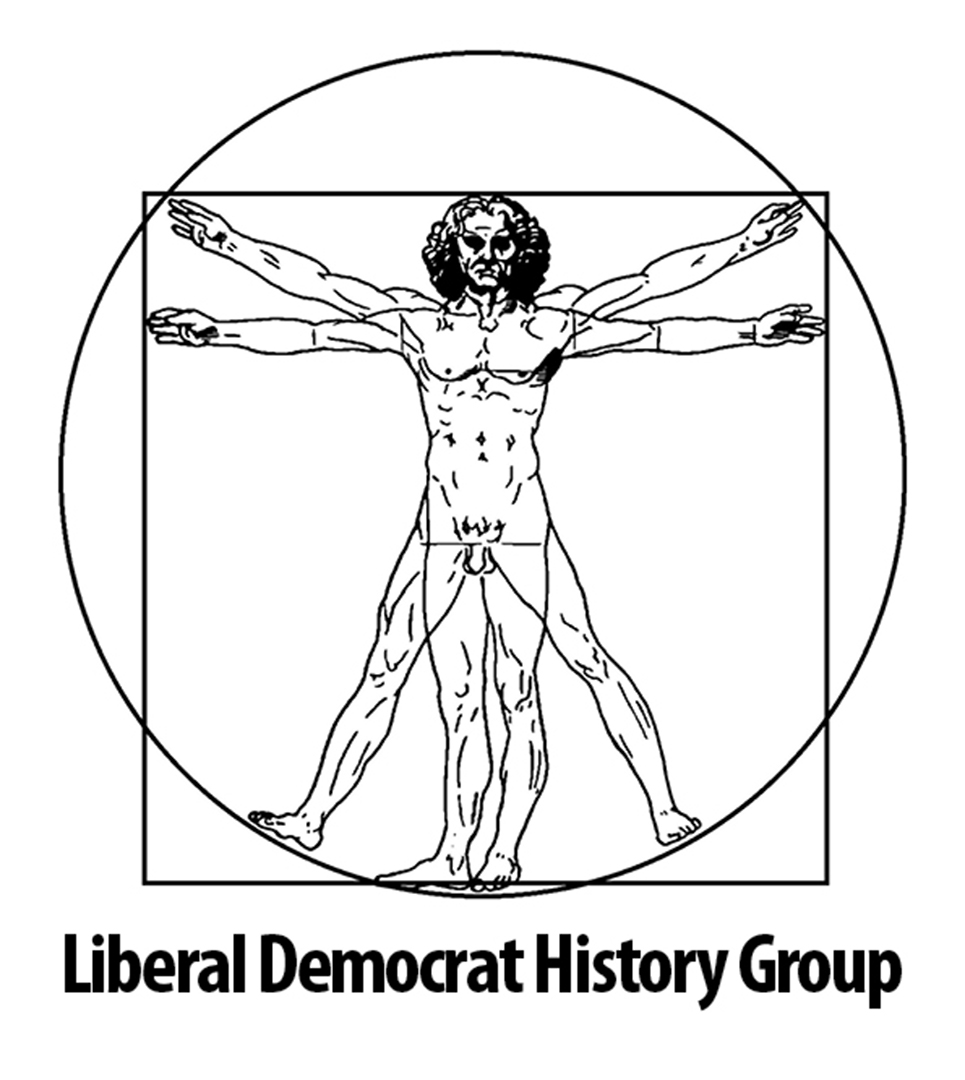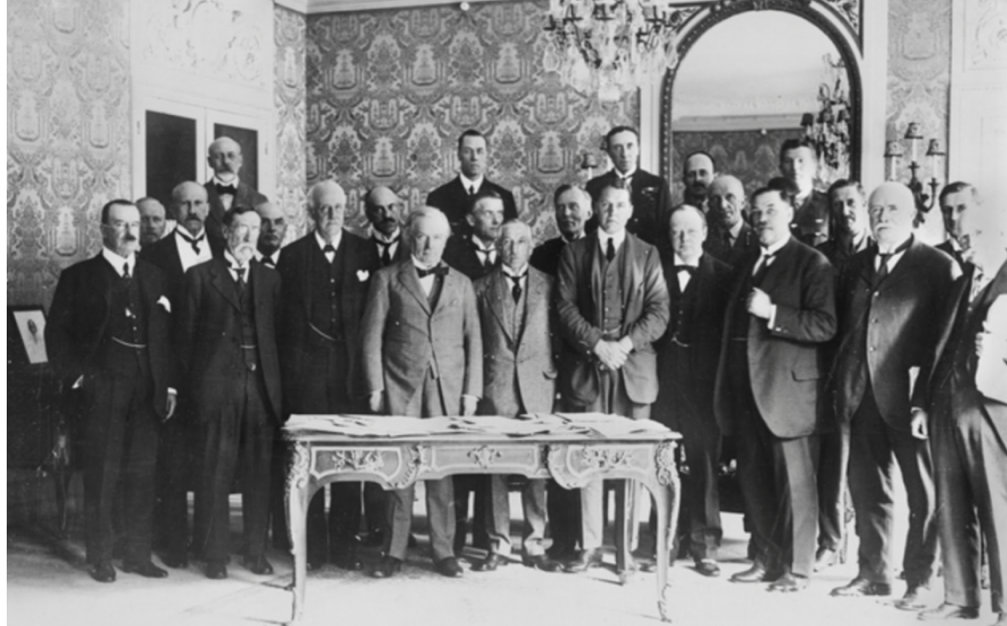At this time, the Liberals remained hopelessly divided, the bitter experience of coalition government having divided the Party into two distinct camps, following the so-called Buckingham Palace Plot, which had seen Lloyd George replace his leader, Asquith, as Prime Minister. Yet, despite their differences, the Liberals remained wedded in their opposition to protection and Baldwin’s planned assault on free trade provided them with a cause around which they could unite. The road to reunification was finally cleared when Lloyd George arrived at Southampton docks on 9 November, following a trip to the United States, and told waiting journalists that he remained committed to free trade. Despite previous flirtations with schemes for Empire Protection, Lloyd George had chosen to return to his Liberal roots.
Although the Welshman was compelled to work under Asquith, who remained leader of the official Liberal Party, he relished the prospect of playing a central role in national politics once again, having been ousted from the premiership in the previous year, by his Conservative coalition colleagues. Furthermore, Lloyd George was in possession of a substantial fund that he had accumulated through the sale of honours, during his time as Prime Minister. This provided him with a powerful bargaining tool over the cash-strapped Liberal Party, the grateful beneficiaries of a £90,000 election donation from their former colleague. The rift between Asquith and Lloyd George was all but forgotten in the name of free trade and Lloyd George even travelled up to support Asquith in his Paisley constituency, exclaiming that, ‘the rites of Liberal reunion were celebrated at an enthusiastic meeting in the Town Hall’.
The Party’s platform was influenced substantially by Lloyd George and Charles McCurdy. The two men were largely responsible for the free trade manifesto, which condemned the government’s failure to prevent the French occupation of the Ruhr and claimed that the maintenance of a long term peace settlement was dependent upon Europe’s economic recovery. The Liberals also advocated the admittance of all countries to the League of Nations and pledged to re-open diplomatic relations with Russia. In addition, the programme contained the first traces of the radical industrial policy put forward by the Liberals in 1929, including reference to a national credit to ease unemployment and plans for schemes of afforestation.
With access to Lloyd George’s finances, the Liberals were able to enhance their chances by contesting 158 of the 456 seats, at a total cost of £150,000. The result was a welcome boost for the Party, who benefited from a large swing against the Conservative government and gained 158 seats. They re-gained old territory in areas such as Manchester, which had witnessed no Liberal successes since the war. The Party captured municipal Tory strongholds such as Bath, Salisbury and Wells, in addition to provincial seats such as Bridgwater and St Ives. The Liberals were also successful in seaside towns such as Weston-super-Mare and Torquay. The Manchester Guardian marvelled at the number of Liberal successes in places which boasted cathedrals, racecourses and esplanades. The Party now held a quarter of the seats in Parliament, having increased its share of the vote from 45.2% to 51.3% in those constituencies where a straight fight with the Conservatives had taken place in both 1922 and 1923.
On the surface at least, the election contest of 1923 had established the basis for a healing of old wounds within the Party and allowed the Liberals to take to the centre of the political stage once again, in the defence of a cherished economic doctrine. With the support of Lloyd George’s political fund, the Party had successfully recovered some of the political ground it had lost in previous years and made gains in constituencies that had traditionally proved illusive to Liberal success.
Nevertheless, their apparent accomplishments masked a number of underlying problems for the Liberal Party. Although Lloyd George and Asquith had put their names to a joint manifesto, old rivalries between Liberal supporters prevailed in some constituencies and a special committee had to be assigned in order to resolve difficulties and prevent opposing Liberal candidates standing against one another. Despite this, in some constituencies it was impossible to heal the rift between local Party members and in both Cambourne and Cardigan the Independent Liberals went to the polls against competing Liberal candidates who were aligned to Lloyd George. Furthermore, whilst Lloyd George stood united with the Liberals in defence of free trade, he was reluctant to pass his finances over to the ailing Party and continued to issue his own unauthorised policy statements, amid press rumours that he hoped to re-form a coalition government. Anxious not to displace the Party’s new found unity, Asquith chose not to confront his Welsh subordinate, but this merely delayed tensions between the two men which would resurface again later.
In addition, the Labour Party were continuing to make advances in industrial areas such as South Wales, at the Liberals’ expense. A loss of working class support for the Liberals was also evident by the number of seats across the Midlands which fell into Labour hands, including Leicester, Derby Northampton and Wellingborough. The Liberals had seized most of their gains in straight fights with the Tories, but it was doubtful as to whether these could be held at future elections. Of the 139 seats the Liberals won in triangular or straight fights, 91 constituencies were held with less than 2,000 votes and 46 areas were captured with a majority of less than a 1,000. Furthermore, now that the Liberals held the balance of power in the House of Commons, it was they who would bear the responsibility of deciding how its growing rival, the Labour Party, should be treated within the parliamentary system.
The Liberals remained uncertain of how to tackle this increasing menace and failed to generate any new ideas that would help to retain working class support. Despite the promotion of original schemes for national development, the Liberal campaign essentially represented a defence of the status quo. As Trevor Wilson has argued, many voters therefore thought that supporting the Liberals was the safest option in 1923, fearing that dubious tariff experiments would only increase the cost of living. Indeed, aside from the retaliatory defence of free trade, it was difficult to determine what the Liberals could actually agree on. Consequently, the 1923 campaign was little more than a superficial revival for Liberal Party, who would never again be regarded as a serious contender for office.

